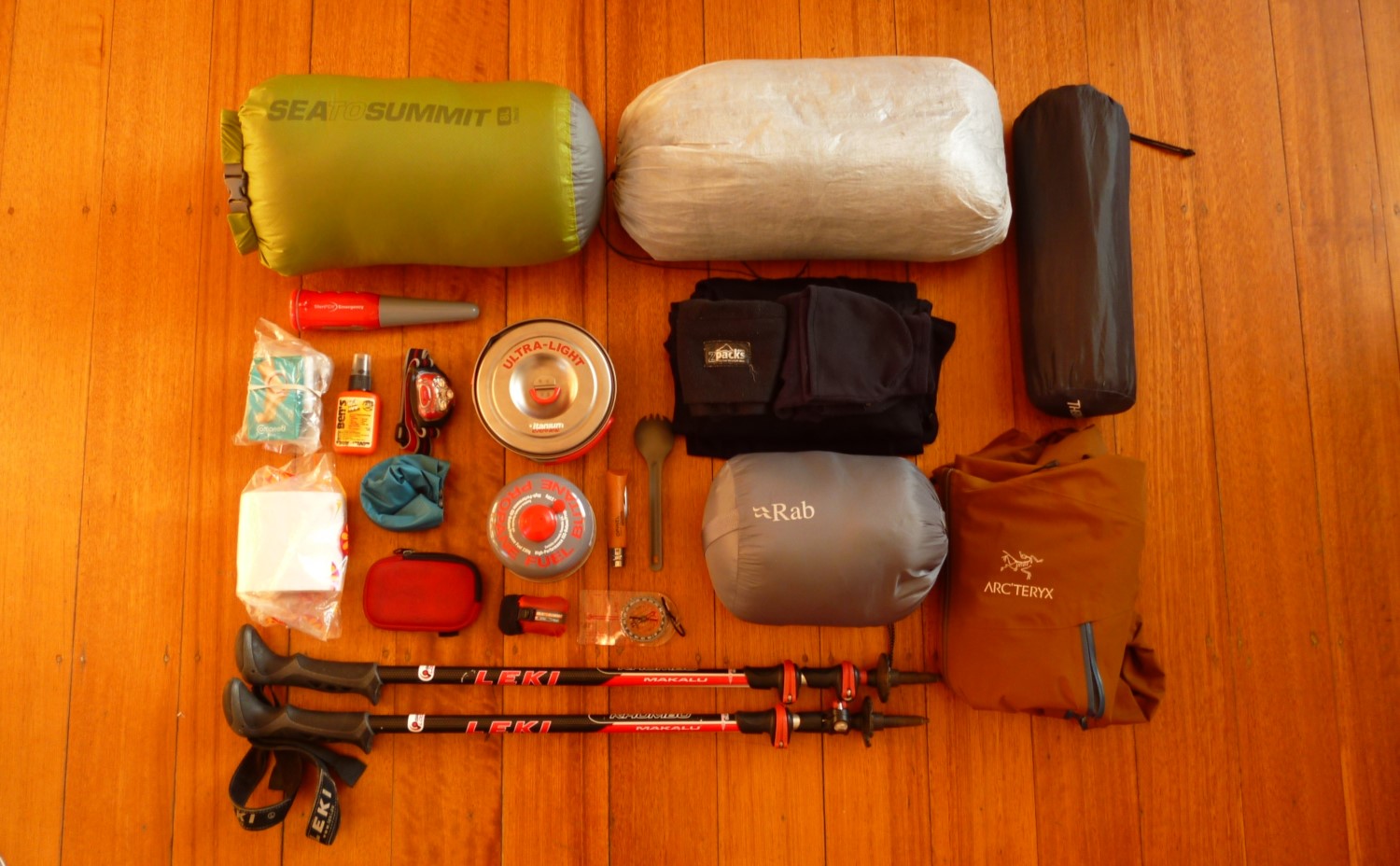Best Hiking Microspikes of 2023
JUMP TO: KAHTOOLA MICROSPIKES / UNIGEAR ICE TRACTION CLEATS / BLACK DIAMOND BLITZ SPIKES / KAHTOOLA EXOSPIKES / BLACK DIAMOND DISTANCE SPIKES / YAKTRAX WALK / BUYING ADVICE
Author: Steve Edgerton
The Short Version
Best Overall: Kahtoola MICROspikes
Best for Deep Snow: Unigear Ice Traction Cleats
Best for Ultralight: Black Diamond Blitz Spikes
Best for Mixed Conditions: Kahtoola EXOSpikes
Best for Trail Running: Black Diamond Distance Spikes
Best on a Budget: Yaktrax Walk
The Long Version
Microspikes can be the difference between a fun, successful winter hike and a slipping, sliding, potentially dangerous affair.
Walking on ice, whether going up, down, or on the flats, is simply never a good time without the right equipment on your feet. So heading onto icy trails in winter or spring without microspikes is a mistake you will probably only make once.
In this review, we’ve rounded up the best winter traction devices, highlighting our favorites for all conditions and uses, from deep snow and mixed surfaces to trail running and everyday walking.
We dive into the features, durability and versatility of different traction devices and share our top options for ultralight evangelists and the budget conscious among us.
If you love reading this review of the best microspikes for hiking, then you'll likely love reading some of our other hiking and backpacking content:
Need To Know What To Look Out For?
Need some extra guidance on finding the best microspikes for you? Don’t miss our buying advice at the bottom of the page. We break down different features, materials, and tradeoffs in performance that you should consider before investing in traction devices for your winter hiking.
Best Overall: KAHTOOLA MICROSPIKES
MATERIAL: Elastomer/stainless steel
GRIP TYPE: Crampon
WEIGHT: 11 oz
M/F: Unisex
PRICE: $$
PROS: Excellent traction, secure yet easy to remove, durable
CONS: Pricier, wear down on dry/rocky terrain
The popular Kahtoola MICROspikes offer the best all around performance from any winter traction device on the market.
The MICROspikes have crampon-style spikes for secure footing on deep snow and slick ice. Each foot is armed with 12 3/8-inch spikes. They are burly and well designed, giving you excellent purchase even on the most precarious trails. An elastomer body fits snugly around boots and shoes and makes it easy to take these microspikes on and off. The spikes are made from stainless steel—you can expect them to see you through many winters spent hiking.
The prominent spikes mean these would generally be overkill on trails with light snow, where they will wear down quicker. But with a reasonable price point, a relatively light weight, and outstanding performance on snow and icy terrain, the Kahtoola MICROspikes are the best option for both popular, iced-over trails and deep powder adventures at higher altitudes and latitudes.
Best for Deep Snow: UNIGEAR ICE TRACTION CLEATS
MATERIAL: Elastomer/stainless steel
GRIP TYPE: Crampon
WEIGHT: 16.6 oz
M/F: Unisex
PRICE: $
PROS: Outstanding traction and durable design at an affordable price
CONS: Heavy, not good on hard surfaces
With 18 1/2-inch spikes, the Unigear Ice Traction Cleats mean business. They are an excellent choice for deep snow hikes above the tree line, where every step up or down needs to feel secure.
The aggressive spikes are combined with an elastomer band typical of snow grips, offering great crampon-style traction while fitting most boots and remaining relatively easy to take off.
That is a good thing, because although these microspikes eat up deep powder like it’s nothing, they are not great on shallow dustings of snow or on dirt: you’ll feel off balance and will quickly wear down the spikes that make them stand out.
These microspikes are also on the heavier and bulkier side at just over a pound per pair. But for the traction performance and at their low price, the Unigear Ice Traction Cleats are tough to beat for hiking in deep snow.
Best for Ultralight: BLACK DIAMOND BLITZ SPIKE
MATERIAL: Elastomer/stainless steel
GRIP TYPE: Crampon
WEIGHT: 3.2 oz
M/F: Unisex
PRICE: $$
PROS: Ultralight, packable, compatible with most hiking shoes
CONS: Not great for serious snow travel
The Black Diamond Blitz Spikes are a backpacker’s best friend. At only 3.2 ounces, these microspikes were made for those who are traveling fast and light but still need to be prepared for some potential icy and snowy conditions.
The Blitz Spikes keep the weight down by relying on only 6 1/3-inch spikes located on the forefoot. The lightweight but robust elastomer band fits well over most hiking shoes and features reinforced dual-density elastomer eyelets for added durability.
While they don’t provide the traction you will want for serious snow travel, these microspikes are a great, packable option for thru-hikers or peakbaggers who expect to encounter some patches of ice or snow.
Best for Mixed Conditions: KAHTOOLA EXOSPIKES
MATERIAL: Elastomer/tungsten carbide
GRIP TYPE: Cleat
WEIGHT: 8.2 oz
M/F: Unisex
PRICE: $$
PROS: Great for varied terrain, durable
CONS: Not great for deep snow
The Kahtoola EXOspikes were designed with a variety of surfaces in mind. From ice and snow to dirt and rocks, their tungsten carbide spikes offer grip where you might slip, but with a low enough profile to not be ground away by bare trail.
This makes them an ideal option in shoulder season, or on any hike where you can expect constantly varying terrain and don’t want to spend your day out endlessly pulling your microspikes on and off.
The EXOspikes feature a toe bail for extra security, a heel tab for easy on/off, and come with their own storage sack. Less aggressive spikes mean they aren’t the best for deeper snow, but they compensate for that by being one of the most versatile winter traction devices currently available.
Best for Trail Running: BLACK DIAMOND DISTANCE SPIKE
MATERIAL: Elastomer/stainless steel
GRIP TYPE: Crampon
WEIGHT: 6.7 oz
M/F: Unisex
PRICE: $$$
PROS: Excellent traction across variable terrain, lightweight, low profile
CONS: Expensive
With the Distance Spike, Black Diamond comes close to perfecting the balance between excellent traction and sleek, low-profile design. That is what makes these the best traction device for trail runners looking to feel secure while remaining nimble in winter conditions.
The Distance Spikes feature low volume stainless steel chains with 14 triangular 1/3-inch spikes. The harness system shaves weight by combining an elastomer heel band with a softshell fabric upper that covers the forefoot. A light weight of only 3.4 oz each translates to less fatigue and energy expenditure, vital considerations on those multi-hour long runs.
The lower profile of these microspikes also means that runners can often move through dry sections without always needing to remove them. Although some may prefer more aggressive traction in steep terrain, the Distance Spikes perform well over all snowy and icy trails.
Their only real downside is the price. They are the most expensive winter traction device on this list, by a fair margin. But with few compromises in design and performance, it is an investment that dedicated winter trail runners likely will not regret.
Best on a Budget: YAKTRAX WALK
MATERIAL: Elastomer/zinc-coated steel
GRIP TYPE: Chain
WEIGHT: 5.4 oz
M/F: Unisex
PRICE: $
PROS: Easy on/off, secure, affordable
CONS: Not suitable for deep snow
The Yaktrax Walk was one of the first winter traction devices. Very little has changed since its first iteration decades ago. Rather than spikes, Yaktrax are famous for their steel coils that dig into snow and ice to provide traction.
Although the coils perform reasonably well in shallow snow and on icy urban surfaces, they don’t provide the traction needed for deeper snow and may make running uncomfortable. But for everyday winter walking and for trails with light snow and varied terrain, the Yaktrax Walk offers the best bang for your buck.
BUYING ADVICE FOR MICROSPIKES
When shopping for new microspikes or snow grips, it helps to have a good understanding of what conditions you will be using them in and what features to look out for. Here is what to look for to ensure you go with the winter traction device that best fits your needs.
Traction
Microspikes really exist to fulfill a single function: improving grip on insecure surfaces like ice, packed snow, and deep powder. Traction on microspikes is typically served up in one of three options: crampons, chains/coils, or cleats.
CRAMPONS: Crampons have sharp teeth that provide the most aggressive traction and the best grip on snow and ice. They are great for steep terrain in alpine environments.
CHAINS: Chains have slightly less traction but are more comfortable to walk in than crampons. They can handle snow and ice but are better suited for icy or hard-packed snowy trails than steep, technical ascents.
CLEATS: Cleats typically utilize small metal studs, offering the least traction but the most comfort and often weigh less. They are often favored by runners or backpackers looking for an ultralight traction device that they will need only sparingly.
Crampon-style microspikes offer the most agressive form of traction and are best suited to steep alpine terrain.
Versatility
Each different traction device performs best on different surfaces. Crampon-style snow grips are typically highly specialized to do best in deep snow and ice, while cleats and chains can do well over a variety of surfaces and conditions. Think about how specialized or varied the terrain that you spend most of your time on is before purchasing microspikes.
Weight
A pair of microspikes can range from 3 or 4 ounces to over a pound in weight. Generally, more weight means more aggressive traction, which means more stability.
For steep alpine hikes, the traction that heavier crampon-style traction devices provide makes sense, whereas trail runners or hikers covering less technical terrain, lighter options with less traction are often the more appropriate choice.
Durability
Microspikes with crampon-style points are especially prone to wear down with time, especially if regularly worn on hard surfaces, like dirt or rocks. The best way to get the most out of your spikes is to keep their use to the surface they were intended for.
If you commonly find yourself out hiking in a wide variety of conditions, owning multiple pairs of microspikes can help you extend their lifespan. You can pull out the crampons for when the going gets steep and consistently snowy while relying on cleats or chains when you will be traversing multiple surface types in a short time.
Sizing
The vast majority of microspikes are designed with an elastic harness that stretches around hiking boots and shoes. Getting the right size is vital. Go too large and you risk slippage of the traction points. Too small and they become a pain to stretch over your boots, will bend your toe box upwards, and you might snap the harness.
All manufacturers provide a sizing chart, usually correlated to shoe sizes. If you can though, head to an outdoor store and try on a few different microspikes over the footwear you would typically use them with. This will help you get a good idea of how they feel and what size fits you best. They should be snug, but not add upward tension to your boot or your foot.
MORE INFORMATION
If you are heading out into serious, steep, alpine terrain and are still not sure if you need microspikes or full-blown crampons, then be sure to check out our article Microspikes vs Crampons — WTF is the Difference?
Otherwise, if you loved this gear review article, then you'll likely love traversing some of our other hiking and backpacking content:
Or check out our entire list of Gear Reviews, Knowledge Base Articles, or Destination Guides for more hiking, backpacking, and outdoors related content.






















